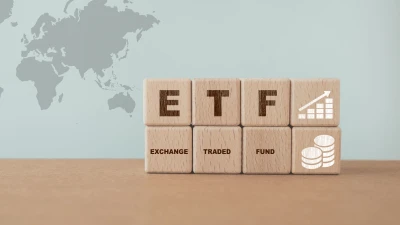Multi-managers back in play


There is a solid core of financial planners using multi-manager products and a growing army of advisers discovering their appeal in volatile markets.
However, the rise of the boutique manager offering single manager products with stellar returns has pushed multi-manager products into the shade.
One reason multi-manager products became overshadowed was the crash of international equities in 2000 that took the edge off their performance.
Intech Investment Consultants former chief investment officer Hugh Dougherty said the drop in performance during this period meant many people focused on this dissatisfaction rather than diversification.
“People gradually moved towards single manager funds, but then they discovered they were creating unwanted risk,” he said.
“In Australia we were slightly different, as we never had a big crash in 2000, but we focused less on international exposure as a result.”
Dougherty said the mentality that beta will save all situations and not to worry about asset selection has become the norm.
“Many Australian portfolios are overweight in Australian equities, which is due to franking credits, so many multi-managers have a bias towards this sector.”
But the advantage of a multi-manager product is the sector bias can be moved around to suit the market conditions.
“The good thing about a multi-manager fund is you can move around asset classes depending on which sector is performing well,” Dougherty said.
“To achieve this outside a multi-manager fund is a lot of bother.”
Lonsec general manager of research Grant Kennaway said multi-manager funds were designed to perform well over the long term.
“People talk about one to three-year performance and that is what multi-manager funds do well,” he said.
“It is an ‘invest and forget’ option for advisers, as most multi-manager funds are set up to deliver second quartile performance.”
However, Kennaway said there are advisers who chase first quartile performance and they tend to favour single manager products to meet this goal.
“A lot depends on how the dealer group’s approved list is structured and the kind of manager diversification they are looking for,” he said.
With balanced multi-manager funds, the obvious bias from the home-grown products is towards Australian equities.
Kennaway admits the size of the Australian component in multi-manager funds does alter the returns, and in recent times made them more favourable.
The average three-year return (to March, 2007) for a balanced multi-manager fund is 15.7 per cent, according to Lonsec. This reflects favourably with the Morningstar benchmark return for the sector of 15.8 per cent.
Taking the returns out to seven years, the multi-manager fund returns 8.9 per cent, which compares to the benchmark return of 8.1 per cent.
Lonsec has been updating its report on multi-manager funds, with its release due in August.
However, many advisers do still favour single manager products, with one argument being that the fees are cheaper than multi-manager products.
Russell managing director of retail investor services Chris Corneil said well-constructed multi-manager funds are the same price as the single manager products.
“For the price of a single manager, you can buy 30 style managers in the one product,” he said.
“If I look through the top 20 largest dealer groups, every single one is using a multi-manager product at some level.
“That fact hasn’t escaped the suppliers of these products.”
Corneil said looking at the top retail suppliers, all are now offering multi-manager funds using good efficient managers in the mix.
“These are well-constructed multi-manager funds that will deliver actual returns,” he said.
“One of the attractions is a multi-manager fund will deliver the active return of the single manager but with half the risk.”
Corneil said it is a very efficient way of investing.
“We now talk about a portfolio of funds, there are about 10,000 products to choose from, and this just increases the ways of blowing up the portfolio,” he said.
Last year in Australia the difference between the top performing equities fund and the lowest was 40 per cent.
“That means an investor could pick a fund that was delivering a return that was 1,800 basis points behind the market rate,” Corneil said.
“There is plenty of opportunity for the investor and adviser to find poor returns for their portfolio.”
However, many advisers are realising the attraction of multi-manager funds in delivering consistent returns for clients regardless of market volatility, especially for those with large exposure towards Australian shares.
Dougherty said people are focusing once again on multi-asset portfolios and trying to rebalance the weighting towards equities, both Australian and international.
“If you look at the average superannuation fund there is overwhelming risk in the portfolio due to the exposure of Australian and international shares, which are about 80 per cent of the portfolio,” he said.
“The solution is to use a multi-manager fund to create performance differential using different asset classes rather than using just a single manager in one asset class.
“One thing people forget is multi-manager funds create much more diversification of risk by using different managers.”
However, risk in a single asset class, such as Australian equities, can also be reduced by using a multi-manager.
Dougherty said risk and return can be achieved through different managers in one asset class such as Australian equities.
“One needs to look at a broader sense of diversification, which can be achieved from the 2,000-odd products that are available to Australian investors.
“By taking a growth fund and then other styles, you are moving away from having a star manager which is delivering diversification from the investor.”
Dougherty said people want a top return with the lowest risk, but often they take the risk factor out of the returns.
He said people can build a spread of investments that will still deliver a good return, but with lower risk.
“People can chase returns while driving the risk premium away,” he said.
“A multi-manager fund is a way of delivering top returns, but with a manageable risk strategy.”
Dougherty said investors and managers cannot pick market timing, so by using multi-managers the investor is getting better exposure to cycles, which is also downsizing the risk mitigation.
“It is strategies to handle the downside of risk and returns to return manageable outcomes.”
Corneil said a multi-manager fund is picking managers from that spread, and the chances of picking a fund created from all the poorer returning managers was slight.
“You can have both growth and value managers, which will counter whichever sector is not performing so well at that point,” he said.
The multi-manager fund would be more likely constructed from average performing managers that would deliver a second quartile return on a consistent basis.
“Being in the second quartile is a good place to be if the return is consistent,” Corneil said.
“For the adviser, it is supplying them with an efficient way of delivering consistent returns for their clients rather than the varying returns from a single manager.”
If the adviser was using a portfolio of single managers they would be consistently changing managers to deliver consistent returns, which would be very time consuming and inefficient.
Russell changes about four managers a year in a product.
“We target about 12 per cent a year change in a portfolio of managers,” Corneil said.
“If an adviser was doing that they would be responding every three months to change managers, which is a lot of effort and time for them.”
He argues that this would require a new Statement of Advice every time they changed a manager and Corneil argues the adviser is not there to be a strategist in manager selection.
“It is about efficiency and creating a portfolio that will deliver consistent returns for the investor,” he said.
Another factor in the growing use of multi-manager funds is the ease of access through platforms.
Kennaway said multi-manager fund use by dealer groups has grown where platforms have become a cornerstone product.
“We are also seeing the platform providers [doing] the multi-manager construction in-house instead of outsourcing the portfolio construction.”
He cites BT, which has bought the manager selection from Intech.
“There are strong inflows to multi-manager products on platforms, and it is becoming a major part of their business,” he said.
“You are also seeing consulting groups, such as Mercer and van Eyk, creating their own multi-manager products.”
Aviva general manager of wealth management products Andrew Barker said multi-manager products have a strong role to play on platforms and Navigator is seeing inflows increase to these products.
“Platforms do have some badged products for the multi-manager selection component, but both in-house and badged products are reporting strong funds under management,” he said.
“The value proportion of multi-manager funds is still valued by advisers.”
Barker said while multi-manager funds are achieving second and third quartile performance, advisers accept that is their role in the portfolio.
“Across managers and styles you do get less volatility, so you are moving towards median performance,” he said.
“There is a more stable return and for many investors they want less volatility, which they wouldn’t get with a single manager.”
Navigator has four balanced multi-manager funds and three single sector funds on the platform.
Barker said funds under management in multi-manager products is more weighted towards the balanced products, which account for two-thirds of the total funds under management.
“We offer low cost and simplicity in the multi-manager options on Navigator,” he said.
“Advisers do seem to want a multi-manager play in model portfolios and then they can add some of the sexier stuff for extra performance.”
Barker said changes to the pre-selected managers is very low, in fact, Navigator has the same managers since 2003.
“Mercer provides the recommendations for the multi-manager products on Navigator, which are taken from a global resource to provide optimal solutions,” he said.
“The managers are reviewed at a monthly meeting, reviewing performance for example, to look at if we need to make any significant moves to the line up.”
Multi-manager funds seem to be moving back into the limelight again, becoming the core of a portfolio in troubled times.
Recommended for you
Two former senior Global X employees have launched their own ETF provider, ETF Shares, focused on offering index ETFs for advisers and retail investors.
With GCQ Funds Management and Lakehouse Capital making their recent ETF debuts, the two fund managers unpack why financial advisers are essential to their respective launches.
ETF provider Global X is set to launch its latest ETF, focused on artificial intelligence infrastructure.
Index provider MSCI has unveiled two measures to make it easier for financial advisers and wealth managers to access transparent insights into private assets.














